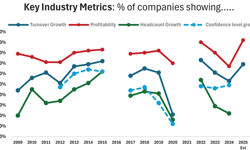A Water Footprint Assessment maps the amount of freshwater consumed throughout the production chain of paper. The results show that water for growing trees represents the primary contribution to the total water footprint of paper. “If you think about the water needed in producing one sheet of A4, most of the water is used in the forest as part of the natural water cycle,” says Sami Lundgren, Director, Environmental Services, UPM.
“By working with the Water Footprint Network, UPM has taken a leading role in reviewing sustainable water use in the paper industry. The Water Footprint Network applauds this initiative. UPM’s pilot study shows that when forests are managed sustainably, paper products will have little contribution to the growing concerns of water scarcity,” explains Ruth Mathews, Executive Director, Water Footprint Network.
Water footprint divides the water into three different types – green, blue and grey. Green water represents the natural water cycle – the water evaporated by trees. Blue water refers to water withdrawn from rivers, lakes and aquifers. Grey water presents the amount of water needed to assimilate the remaining pollutants after cleaning process wastewater.
“According to our pilot study, 60% of paper’s water footprint is green water,1% is blue water and 39% grey water. Around 99% of the water footprint comes from the supply chain and the remaining 1% from the actual paper mill production processes,” explains Sami Lundgren.
The efficient use of water is a key area of environmental responsibility in UPM. UPM’s waste water volume per tonne of paper produced is nearly half of what it was 15 years ago. In 2010 UPM set a long term environmental target for 2020 to further reduce the quantity and improve the quality of waste water in pulp and paper production. In addition to paper’s water footprint development, UPM has started a water footprint study for the production of plywood in Finland.
The pilot study was calculated for UPM Nordland Papier mill in Germany. For additional information on UPM’s sustainable water use, complete study results and an introduction video to water footprint please visit UPM’s website at www.upm.com/responsibility > Water.










